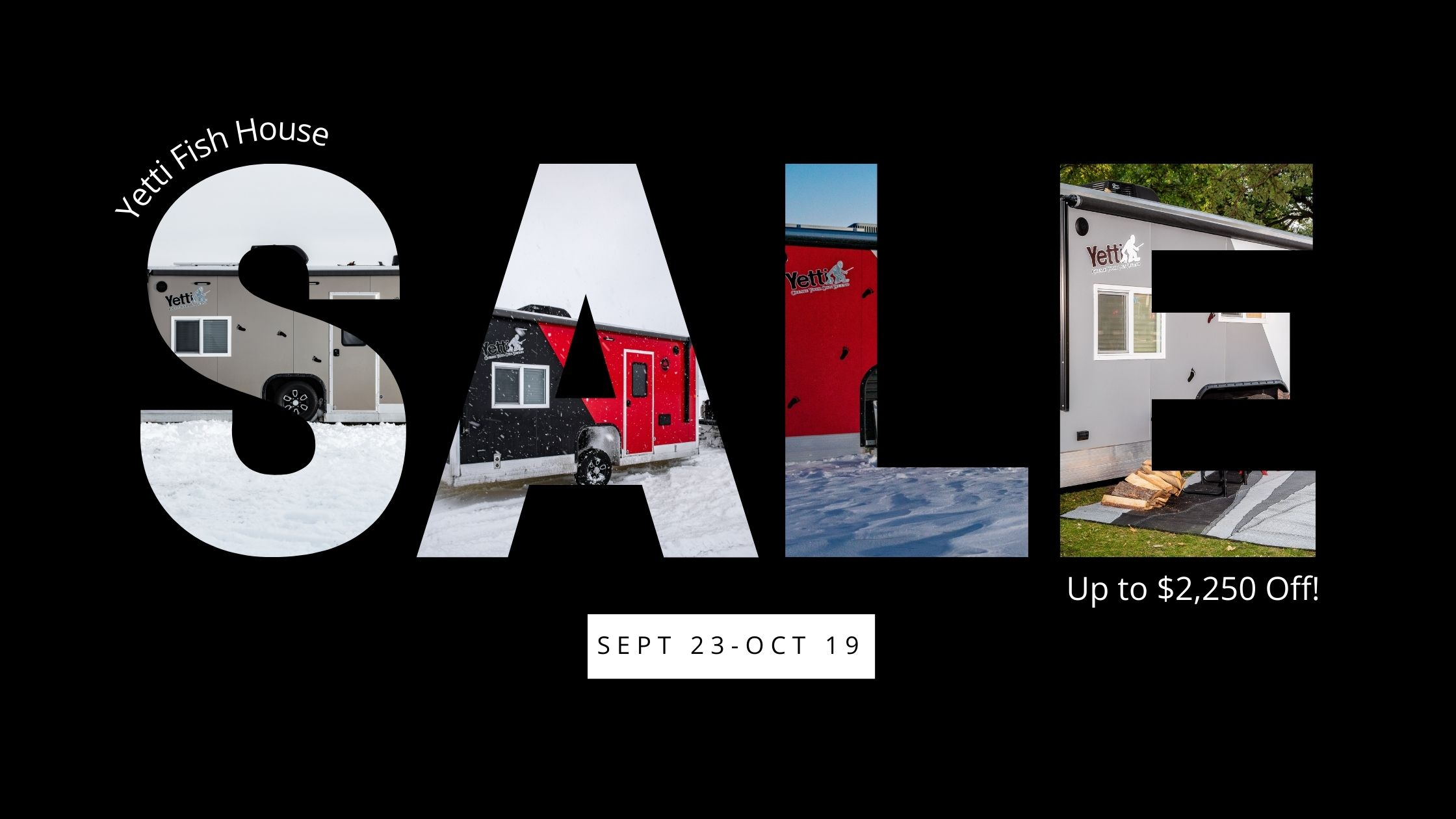Buddha.
Finally in expo white.
They come in many sizes. That’s one of the bigger ones.That would turn some heads in NV. Not sure if you could park that beast at a ski area.
They come in many sizes. That’s one of the bigger ones.That would turn some heads in NV. Not sure if you could park that beast at a ski area.
Imperial Xplore trailers already have torsion axles. Just like the ice house picturedThere’s your 4 season travel trailer. The big ones have two furnaces.
Yetti Outdoors Fish Houses - Your Ultimate All-Season Escape
The lightest and highest quality ice houses in the industry due to their durable build on a single weldment aluminum trailer.yettioutdoors.com
Won’t freeze up even if you’re sitting out on the ice at -30f.
Not sure how the hydraulic suspension works on washboard. Just rip it out and put some torsion axels in.
View attachment 753919
There’s your 4 season travel trailer. The big ones have two furnaces.
Yetti Outdoors Fish Houses - Your Ultimate All-Season Escape
The lightest and highest quality ice houses in the industry due to their durable build on a single weldment aluminum trailer.yettioutdoors.com

More rugged? In what way?We've been researching our next traiuler for fulltime living for the last three years and have looked at everything available. We made our decision and are currently building a true four season dual axle offroad trailer with Kingdom Camping. As we get further into it, we'll start posting more information about it. Fully loaded it will be less than $100k. It will be a little heavier than the X195, but will also be more rugged and spacious. Dry weight should be around 7,000lbs and GVWR 9,920lbs, so it's probably too big for a Raptor to pull, but easy for an F250/2500. We fulltime pretty much exclusively in ID, WY, MT, UT, AZ, NM, and NV, so it will perform in really hot and really cold weather.
Does yours have the factory subwoofer.
I like those.Imperial Xplore trailers already have torsion axles. Just like the ice house pictured
Gotta be better than the Indiana built units. That wallpaper covered cardboard stuff is just awful.I have always wondered what happens to all that cedar if there is water penetration?
I wouldn't have the slightest worry about that. Air down the trailer, slow down as needed (ie. the same things I'd do with literally any trailer on washboard) and have fun. Independent arm suspension won't give you any measurable benefit on washboard. It may help in some very tricky off-road terrain, but even there, the benefits will be marginal (ie. keeping the trailer more level vs. a solid axle).
The North American market simply doesn't demand it. People here camp in RV parks, not in the "outback" (ie. Australian use case). But a typical solid axle & leaf spring setup is also easier to service, replace, modify, etc.
Gotta be better than the Indiana built units. That wallpaper covered cardboard stuff is just awful.
There are a number of significant advantages to independent suspension. And thre are at least three types of independent suspension. One is torsion axles, one is swing arm with coil springs and one is swing arms with air bags. The typical American trailer suspension system is the archaic and weak leaf spring system found on utility trailers, Olivers, Bigfoot, and most or all trailers from Indiana. These are typically made with the cheapest leaves that have a tendency to break, and they have poor or no shocks. They also usually have plastic bushings that wear out quickly. Olivers, for instance have very little suspension travel and the axle hits the frame as a sop, instead of a rubber bumper. This suspension system is best used on highway trailers only, not on back roads. These leaf spring systems are not easier to service, because the bushings wear out or, if provided, the many pivot points must be greased regularly.
The Xplore X22 and XR22 use torsion, independent suspension with a hydraulic ride height adjustment. Full suspension travel is retained at any height setting. They cannot be adjusted side to side, just overall ride height. Torsion gives excellent ground clearance and is a good durable system that needs no alignment. Swing arms with airbags are on the new X195 and Roamer 1. These adjust ride height and provide side to side leveling. And they have good shock absorbers. The ride is good and they have more travel than the leaf spring systems, with no chance of breaking a leaf. Swing arms with coils are good too, but can be either stiff or soft depending on how the factory sets them up. There is no ride height adjustment. They must be aligned. This is the system Black Series uses and they don't do a very good job of it. The torsion system has no grease fittings, no alignment adjustments, and no shocks. It is maintenance free. The swing arm systems can require alignment and have greasable pivot points on the swing arms, but they require less attention than the zerks on the equalizer/leaf spring systems. They also offer superior suspension character when compared to leaf springs. Swing arm systems have better ground clearance than straight axle systems too.
I have seen one at ski resorts but 19ish feet.They come in many sizes. That’s one of the bigger ones.
I'm only talking about the bigger, heavier, four wheel trailers. At a 9,920 GVWR, you benefit from having a steel frame (galvanized and coated) that can take the strains of the weight and IS articulation. I also prefer an aluminum box with thick walls/floor/ceiling and 100+ mil fiberglass rather than the lightweight, thin walled composite options. Built correctly, that combination of steel, aluminum, fiberglass, high density foam and azdel will weigh more and should be more rugged over time. Of course, no trailer should use any wood in the walls/floor/roof.More rugged? In what way?
